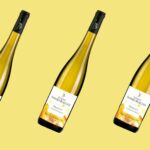Bordeaux wines are among the most prestigious in the world. With a rich history, varied terroirs and renowned appellations, they appeal to wine lovers and collectors alike. Thanks to its grands crus classés, Bordeaux is a benchmark for red, white and sweet wines.
The Bordeaux terroir: a land of exception
The terroir of Bordeaux is unique thanks to the diversity of its soils and its temperate oceanic climate. The presence of the Garonne and Dordogne rivers creates ideal microclimates for viticulture.
The soils are mainly composed of :
- Graves: Rich in pebbles and cobbles, they provide excellent drainage. They are found particularly in the Médoc and Graves regions.
- Clay-limestone: These soils retain moisture well and allow the grapes to ripen slowly, producing powerful wines. Found in Saint-Émilion and Fronsac.
- Sands and silts: Less renowned, they produce more affordable wines, particularly in Entre-deux-Mers.
The Bordeaux climate, marked by mild summers and temperate winters, allows optimal ripening of the grape varieties.
The main grape varieties of Bordeaux wines

Bordeaux wines owe their complexity to blends of carefully selected grape varieties.
Red grape varieties
- Cabernet Sauvignon: Provides structure, tannins and ageing potential. Found in the Médoc and Graves regions.
- Merlot: Offers roundness and fruitiness, dominant in Saint-Émilion and Pomerol.
- Cabernet Franc: Adds finesse and spicy notes, used in the Libourne region.
- Petit Verdot and Malbec: Used to enhance color and aromatic intensity.
White grape varieties
- Sémillon: Gives richness and complexity to Sauternes sweet wines.
- Sauvignon Blanc: Brings freshness and liveliness to dry whites.
- Muscadelle: Adds floral aromas and a touch of sweetness.
The different appellations of Bordeaux wines
Bordeaux is divided into several wine-growing sub-regions, each producing wines with a distinct style.
Médoc: the kingdom of grands crus classés
The Médoc is home to some of Bordeaux's most prestigious appellations. It is renowned for its powerful, tannic wines, dominated by Cabernet Sauvignon.
Major names include :
- Pauillac: Renowned for its grands crus classés such as Château Lafite-Rothschild, Château Latour and Château Mouton-Rothschild.
- Saint-Julien: Renowned for its balanced, refined wines, with vintages such as Château Léoville Las Cases.
- Margaux: Delivers elegant, fine wines, of which Château Margaux is the flagship.
Right bank: Saint-Émilion and Pomerol
Right Bank wines are more supple and fruity, thanks to the dominance of Merlot.
- Saint-Émilion: Produces powerful, velvety wines, with famous crus such as Château Cheval Blanc and Château Ausone.
- Pomerol: Rich, silky wines, including the prestigious Château Pétrus.
Graves and Pessac-Léognan: elegance and diversity
- Graves: One of the few Bordeaux regions producing both reds and dry whites.
- Pessac-Léognan: Brings together well-balanced red wines and exceptional dry whites, such as Château Haut-Brion.
Sauternes and Barsac: legendary sweet wines
These appellations are world-renowned for their sweet white wines made from Semillon grapes affected by noble rot. Château d'Yquem is a perfect example.
The Grands Crus Classés of Bordeaux: a worldwide benchmark
The 1855 classification of grands crus classés was established under Napoleon III for the Paris Universal Exhibition. This hierarchy is based on the reputation and price of the wines.
The Médoc's top five grands crus classés
- Château Lafite-Rothschild (Pauillac)
- Château Latour (Pauillac)
- Château Margaux (Margaux)
- Château Haut-Brion (Pessac-Léognan)
- Château Mouton-Rothschild (Pauillac, added in 1973)
Other classifications exist, such as Saint-Émilion, revised every ten years, and Graves, established in 1953.
Why are Bordeaux wines so popular?
Bordeaux wines owe their prestige to several factors:
- An exceptional terroir: The diversity of soils and climate provides ideal conditions for vine-growing.
- Ancestral know-how: Vinification and ageing techniques guarantee top-quality wines.
- A unique capacity for ageing: Thanks to their tannic structure and balance, great Bordeaux wines improve with age.
- An international market: Bordeaux exports its wines all over the world and enjoys an unrivalled reputation.
How to choose a Bordeaux wine to suit the occasion?
- For immediate consumption: Choose a Bordeaux Supérieur or Cru Bourgeois from the Médoc, to be drunk young.
- For a wine to keep: Opt for a Grand Cru Classé from the Médoc or a Saint-Émilion Grand Cru.
- For a white wine: A white Pessac-Léognan is ideal with seafood.
- For a sweet wine: A Sauternes will go perfectly with foie gras or a dessert.
Bordeaux wines offer a diversity to suit all preferences and budgets.
Mistakes to avoid when buying Bordeaux wine
- Rely on price alone: An expensive wine is not necessarily a better one. Some Crus Bourgeois offer excellent value for money.
- Choosing a wine that's too young: Great Bordeaux wines need ageing to reveal their full potential.
- Neglecting food and wine pairing: A powerful Médoc wine won't necessarily go well with a light dish.
- Ignore the vintage: Some years are exceptional, others more difficult. Always check the vintage before you buy.
Conclusion: Bordeaux, an inescapable wine wealth
Bordeaux wines are synonymous with excellence and tradition. Thanks to the diversity of the Bordeaux terroir, they can be adapted to suit all tastes, from powerful reds to delicate whites. The grands crus classés continue to inspire wine lovers and collectors the world over.
If you enjoyed this article, you may also be interested in "Wine and food pairing for a successful barbecue"!





